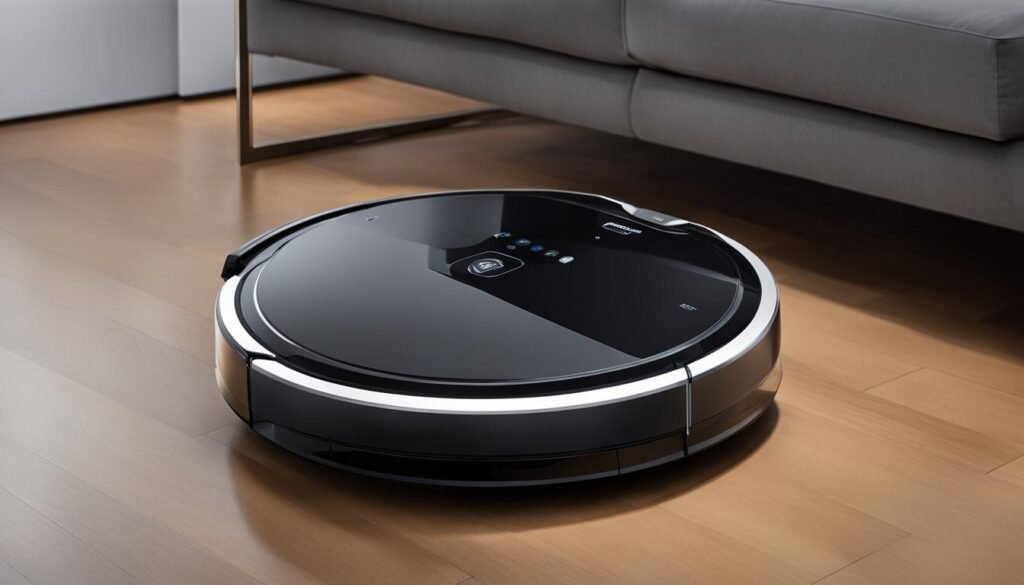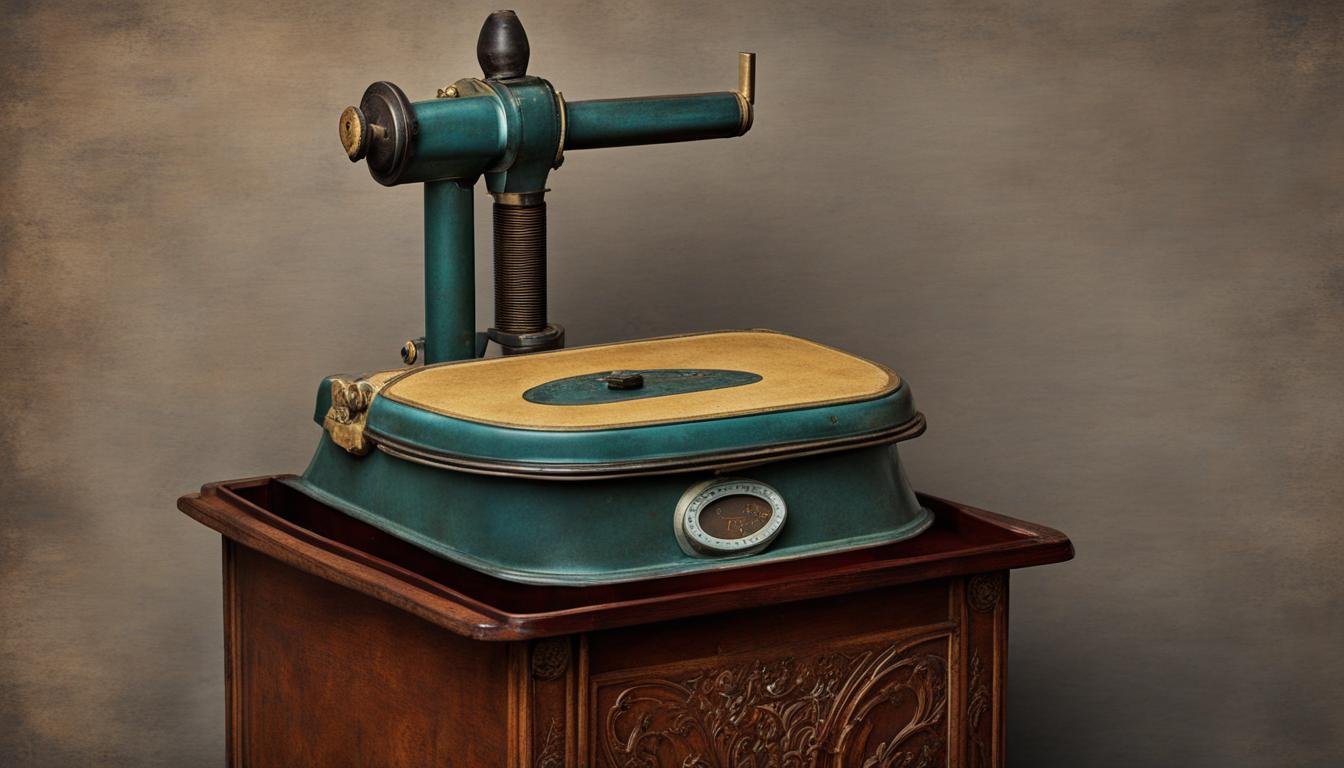When it comes to vacuum cleaners, we often take for granted their lightweight and portable designs. But have you ever wondered how much the first vacuum cleaner weighed?
The first vacuum cleaner, invented by Daniel Hess in 1860, was called the “carpet sweeper.” This early model featured rotating brushes, bellows for generating vacuum, and two cylinders filled with water to collect the dust. While it was a groundbreaking invention, it was never mass-produced due to its large size and weight. In fact, it required two people to operate!
Although the first vacuum cleaner’s weight may seem astonishing compared to today’s models, it laid the foundation for the evolution of vacuum cleaner technology. Let’s dive deeper into the fascinating journey of the vacuum cleaner’s weight and how it has evolved over the years.
Key Takeaways:
- The first vacuum cleaner, invented by Daniel Hess in 1860, weighed a considerable amount and required two people to operate.
- The weight of early vacuum cleaners was a limiting factor in their mass production and widespread adoption.
- The invention of portable electric vacuum cleaners in the early 20th century, such as James Murray Spangler’s portable electric vacuum cleaner, paved the way for more accessible and lighter models.
- Recent advancements in vacuum cleaner technology, including the introduction of robotic vacuum cleaners, have further reduced the weight and increased the convenience of vacuuming.
- The vacuum cleaner industry continues to innovate, and we can expect even lighter and more efficient models in the future.
Evolution of Vacuum Cleaner Technology
In the quest for more efficient and convenient cleaning solutions, the vacuum cleaner industry has undergone significant transformations over the years. Let’s take a closer look at the evolution of vacuum cleaner technology and how it has revolutionized the way we clean our homes.
In 1869, Ives W. McGaffey introduced the world to the first manual vacuum cleaner, aptly named the “Whirlwind.” This innovative contraption bore resemblance to the modern upright vacuum cleaners we know today, but it required manual operation using a crank, which made it somewhat cumbersome.
The real breakthrough came in 1901 when engineer Hubert Cecil Booth invented the first motorized vacuum cleaner, which he dubbed “Puffing Billy.” This gas-powered marvel boasted a 5 horsepower engine and was transported using a horse-drawn cart. While it represented a significant advancement in vacuum cleaner technology, it was still quite bulky and heavy, limiting its practicality.
James Murray Spangler’s invention in 1907 truly set the stage for the future of vacuum cleaners. He created the first portable electric vacuum cleaner, weighing approximately 40 pounds. This portable electric vacuum cleaner caught the attention of William Henry Hoover, who recognized its potential and acquired the patent. This pivotal moment led to the founding of the Electric Suction Sweeper Company, later known as the Hoover Company, a household name that still resonates today.
These early vacuum cleaners laid the foundation for subsequent advancements in weight, size, and portability. As the years went by, manufacturers continued to refine and improve vacuum cleaner technology, offering consumers lighter and more efficient models.
Notable Vacuum Cleaner Models:
| Model | Year | Weight |
|---|---|---|
| Ives W. McGaffey’s “Whirlwind” | 1869 | Not specified |
| Hubert Cecil Booth’s “Puffing Billy” | 1901 | Gas-powered and bulky |
| James Murray Spangler’s portable electric vacuum cleaner | 1907 | Approximately 40 pounds |
These early vacuum cleaners revolutionized the cleaning industry and paved the way for modern innovations. Over time, vacuum cleaners have become more lightweight, compact, and versatile, facilitating easier maneuverability and enhancing overall cleaning performance.
Today, we have an array of vacuum cleaner options to choose from, including cordless models, handheld devices, and even robotic vacuum cleaners. These advancements continue to make our cleaning routines more effortless and efficient, allowing us to maintain cleaner, healthier homes with greater ease.
The Modern Vacuum Cleaner
The vacuum cleaner industry has witnessed remarkable advancements in recent years, particularly in the development of robotic and autonomous vacuum cleaners. These innovative devices have revolutionized the way we clean our homes, making the task more convenient and effortless than ever before.
In 1997, Electrolux introduced the Trilobite, which marked the arrival of the first generation of autonomous robotic vacuum cleaners. These robotic marvels were equipped with advanced sensors and algorithms that enabled them to navigate a room, identify obstacles, and find their chargers independently. However, they did have some limitations that hindered their effectiveness.
One of the major challenges faced by early autonomous vacuum cleaners was their tendency to collide with objects, stopping short of walls, and leaving small areas uncleaned. This limitation was addressed in 2002 when iRobot launched the Roomba, a popular robotic vacuum cleaner that boasted significant improvements and enhancements over its predecessors.
The Roomba revolutionized the industry with its advanced obstacle detection capabilities and dirt detection sensors. These features allowed the Roomba to navigate around furniture, effectively clean near walls, and identify dirtier areas that required more thorough cleaning. Furthermore, the Roomba was designed with cliff detection sensors that enabled it to detect steep drops such as stairs, preventing accidents and damage to the device.

Thanks to these advancements in technology, the modern robotic vacuum cleaner has become an indispensable tool for maintaining a clean and tidy home. With their autonomous capabilities, these devices can effectively clean various surfaces, such as carpets and hardwood floors, without requiring constant human intervention.
In addition to their autonomous features, robotic vacuum cleaners are also known for their compact and lightweight designs. Gone are the days of lugging around heavy and bulky vacuum cleaners. Robotic vacuum cleaners are designed to be sleek, portable, and effortlessly maneuverable, allowing them to reach every nook and cranny of your home.
Furthermore, many modern robotic vacuum cleaners are equipped with smart features that enable them to be controlled remotely through mobile apps or voice assistants. This level of convenience and connectivity ensures that cleaning can be easily integrated into our daily lives, even when we are away from home.
The Benefits of Robotic Vacuum Cleaners:
- Autonomous cleaning capabilities
- Efficient navigation and obstacle detection
- Dirt detection for targeted cleaning
- Cliff detection sensors for added safety
- Compact and lightweight design
- Smart connectivity for easy control
With their remarkable features and advancements, robotic vacuum cleaners have transformed the way we approach household cleaning. They have not only saved us time and effort but have also improved the overall cleanliness and hygiene of our living spaces. As technology continues to evolve, we can expect even more exciting innovations in the world of robotic vacuum cleaners.
Conclusion
The vacuum cleaner has come a long way in its history, evolving through constant innovation and technological advancements. From the early days of wet vacuum cleaners to the invention of portable electric and autonomous robotic models, we have witnessed remarkable progress in the industry.
One significant change has been the reduction in weight, making vacuum cleaners more lightweight and portable. This has made it easier for users to maneuver the machines and reach difficult areas for cleaning. At the same time, advancements in technology have also led to improved cleaning capabilities and efficiency.
Today, consumers have a wide range of vacuum cleaner models to choose from, catering to their specific cleaning needs. Whether it’s a handheld vacuum for quick clean-ups or a powerful upright vacuum for deep cleaning carpets, there is a vacuum cleaner for every household.
Looking ahead, we can expect vacuum cleaners to continue evolving and becoming even more sophisticated. Technological advancements will likely enhance features such as better navigation systems for robotic cleaners, improved filtration systems for healthier indoor air quality, and increased efficiency in power consumption. The future of vacuum cleaners is bright, promising more convenience and effectiveness in keeping our homes clean.
FAQ
How much did the first vacuum cleaner weigh?
The first vacuum cleaner, known as the “carpet sweeper”, was quite heavy and required two people to operate. However, the exact weight of this early model is not specified.
What were the dimensions of the first vacuum cleaner?
The first vacuum cleaner, the “carpet sweeper,” was a large and cumbersome device, with specific dimensions not provided.
How heavy was the first motorized vacuum cleaner?
The first motorized vacuum cleaner, known as “Puffing Billy,” weighed 5 horsepower. However, the exact weight in pounds or kilograms is not specified.
How much did the first portable electric vacuum cleaner weigh?
The first portable electric vacuum cleaner, invented by James Murray Spangler in 1907, weighed approximately 40 pounds.
How heavy are modern robotic vacuum cleaners?
The weight of modern robotic vacuum cleaners varies depending on the model and brand. However, most robotic vacuum cleaners weigh between 5 and 10 pounds.
What advancements have been made in vacuum cleaner technology?
Over the years, vacuum cleaner technology has evolved significantly. Advancements include the invention of motorized vacuum cleaners, portable electric vacuum cleaners, and autonomous robotic vacuum cleaners.
How has vacuum cleaner technology improved over time?
Vacuum cleaner technology has improved in terms of weight, size, and portability. Modern vacuum cleaners are lighter, more compact, and easier to maneuver than their early counterparts.
What is the history of vacuum cleaner evolution?
The history of vacuum cleaner evolution dates back to the invention of the early “carpet sweeper” in 1860. From there, motorized, portable electric, and robotic vacuum cleaners were developed, leading to the advanced models available today.
How has technology revolutionized the vacuum cleaner industry?
Technological advancements, such as the invention of autonomous robotic vacuum cleaners, have revolutionized the vacuum cleaner industry. These innovations have made vacuuming more convenient and effortless for consumers.
What can we expect from the future of vacuum cleaner technology?
With ongoing advancements in technology, the future of vacuum cleaner technology holds the potential for even more sophisticated and efficient models. Consumers can anticipate further improvements in cleaning capabilities and increased convenience.





Leave a Reply